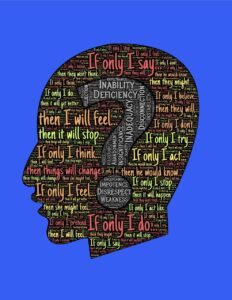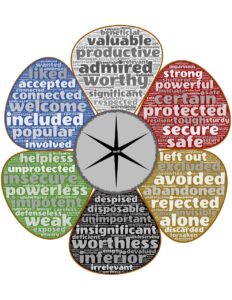TL;DR:
– Understanding Communication Barriers: Identifying various obstacles to effective communication.
– Impact of Language and Culture: Language and cultural differences hinder communication, necessitating proactive strategies for overcoming them.
– Role of Past Experiences: Biases and prejudices intertwined with past experiences impact communication; resolution involves recognizing and addressing these biases.
– Emotional Barriers: Emotions influence communication; fostering emotional intelligence and managing emotions enhance effective communication.
– Improving Relationships: Active listening, empathetic communication, and honing non-verbal skills are key for overcoming barriers and fostering healthy relationships.
Introduction
Communication Barriers. We all encounter them. They form the invisible walls that often hinder the fluidity in our interactions, thereby straining relationships. But what if we could overcome them? As a seasoned relationship advisor and wellness coach, I’ll be sharing five power-packed hacks in this blog post, aimed at dismantling these walls in 2024. Garnered from my years of observing, learning, and advising, these insights promise to deepen your understanding and enhance your relationships. Let’s take this enlightening journey together, shall we?
What are Common Communication Barriers?
Communication is paramount in our everyday lives. But, what happens when there’s a breakdown in this transfer of information? This failure, which can lead to misunderstandings or misinterpretation, is what we refer to as communication barriers.
Understanding the Concept of Communication Barriers
Communication barriers exist in many forms, whether physical, psychological, or cultural. The basic essence is anything that hampers the exchange of ideas, thoughts, or information among people can be considered a communication barrier. This barrier could be as simple as a bad network signal during a telephone conversation or as complex as language differences when talking to someone from a different race.
Examples of Communication Barriers
Some common examples include language differences, physical disabilities like hearing impairment, emotional constraints such as anger or resentment, cultural variations, and even organizational structures. A Harvard Business Review article elucidates that hierarchical structures in organizations can often lead to unclear communication.
Implications of Communication Barriers
Unchecked, these barriers can lead to misunderstandings, misinformation, and even conflict. This infers that a breakdown in communication can hamper both personal relationships and functionality within an organization. An article on Forbes highlights the pitfalls of miscommunication in businesses.
How Do Language and Cultural Differences Become Communication Barriers?
Language and culture are key components that shape our communication patterns. When these elements are not taken into account during interactions, misunderstandings can easily arise, leading to unnecessary conflicts. This questions the effectiveness of communication within diverse settings. How then do language and cultural differences morph into communication barriers?
Impact of Language on Communication
Language is an essential tool for communication. It’s how we express our thoughts, emotions, and ideas. However, its diversity can be a double-edged sword. On one hand, it enables rich multicultural exchanges. On the other, it fosters miscommunications, especially in environments where multiple languages are spoken. It’s not just about word-for-word translations, but also semantic meanings, idioms and contextual nuances that often get lost in translation. Here, the linguistic relativity theory underscores how language influences our worldview and interpretation of messages.
Influences of Culture on Understanding
Similarly, culture significantly sways our understanding and response to messages. Various factors like societal norms, values, and behavioral expectations can affect how messages are interpreted. Intercultural communication situations can be challenging due to unfamiliarity with another’s cultural background. This is echoed in the Cross-cultural communication theory, which emphasizes different interpretation and understanding of communication signals across cultures.
Strategies to Overcome Language and Cultural Barriers
Overcoming these barriers involves linguistically tailored strategies such as embracing simple language, employing visual aids, and using interpretation or translation services. Culturally, one needs respect, open-mindedness, and a genuine willingness to learn about other cultures. Sensitivity training, cultural exchange programs, and encouraging diversity are also crucial. Actions as simple as learning basic greetings in different languages or understanding basic cultural etiquettes can significantly enhance communication quality. How do these adjustments impact our relationships? That’s a discussion for the next section.
How Do Past Experiences and Perceptions Cause Communication Barriers?
Our past experiences often significantly shape our communication style and perspective, leading to biases and pre-conceived notions that act as hurdles to effective, unbiased exchange of ideas. The invisible walls built by past experiences can negatively affect one’s ability to communicate clearly and objectively, thereby resulting in communication barriers.
The Role of Bias and Prejudice
Bias and prejudice, often stemming from previous experiences or conditioned behavior, can distort the way we perceive and interpret messages. For instance, if someone has experienced negative interactions with a particular group of people, they might generalize their experiences and subconsciously develop a bias. This can color their interaction with any individual from this group, creating a barrier to open and honest communication.
Evaluating the Impact of Past Experiences on Current Communication
It is important to recognize the role of past experiences on our current communication patterns. Traumatic incidents, intense experiences, or socially ingrained norms can hinder our ability to express our thoughts objectively and refrain from projecting our insecurities or past traumatic experiences onto others. This residual impact of past experiences typically manifests in forms like verbal aggressiveness, defensiveness, and suspicion, among others.
Approaches to Resolve Bias and Prejudices for Effective Communication
Developing self-awareness is the first step to resolving bias and prejudices. Recognizing one’s bias, and how it influences their communication, can enable individuals to act deliberately to change their behavior. Techniques like mindfulness and cognitive behavioral therapy can help manage biases. Furthermore, imparting diversity training and promoting inclusivity can assist in challenging and changing prejudiced beliefs and biases, therefore fostering effective communication.
External Links:
- Mindfulness and its impact on communication
- Cognitive behavioral therapy and its role in managing biases
How Does Emotions Act as Communication Barriers?
Emotions can significantly impact how we interpret and respond to information, acting as potential communication barriers. As humans, our emotional states often sway understanding and the way we express ourselves. Hence, managing emotions during conversations helps to facilitate effective dialogues. This section elucidates how emotions can obstruct communication, the importance of Emotional Intelligence, and techniques to control emotions during interactions.
Deciphering Emotional Barriers in Communication
Emotional barriers in communication can range from anger and frustration to anxiety and insecurity. Such emotions can cloud judgment, warp the perception of information, and even lead to misunderstandings. For example, a person in an agitated state may misinterpret an innocuous comment as a hostile one. Emotional barriers could also hinder the conveyance of genuine sentiments, possibly distorting messages.
Methods to Ensure Emotional Intelligence in Communication
Emotional Intelligence (EI) is a crucial skill, ensuring effective understanding, empathy, and healthier communication. EI helps individuals recognize their own emotions and those of others, supporting the management and adjustment of emotions to adapt to different scenarios. Daniel Goleman, an American psychologist, identifies empathy, self-awareness, self-regulation, motivation, and people skills as five critical components of EI. Verywell Mind offers a comprehensive guide on this.
Significant Ways to Manage Emotions during Communication
Managing emotions can be accomplished through various ways. Practicing mindfulness and deep-breathing exercises can enhance emotional self-regulation. Also, temporary disengagement, or taking a short break before responding during heated conversations, allows for emotional recovery. Additionally, regular exposure to confronting situations can improve emotional strength and resilience. The Help Guide has some useful tips to manage emotions during communication. So, understanding and managing emotions during interactions can bridge communication barriers, fostering more profound connections and better relationships.
How to Effectively Overcome Communication Barriers for Better Relationships?
Overcoming communication barriers is pivotal in developing and maintaining healthy relationships. It facilitates understanding, fosters trust, and strengthens connections. By understanding what these barriers are and how to navigate them, we can empower ourselves to constructively engage with others. One of the key elements in tackling communication barriers is enhancing our active listening skills, practicing empathetic communication, and improving our ability to convey non-verbal cues.
Appreciating the Power of Active Listening
Active listening is a crucial communication skill. It involves truly hearing, understanding, and responding to the person we’re communicating with. It’s not just about the words being spoken; active listening also encompasses observing the speaker’s non-verbal cues. This can minimize misunderstandings and improve accuracy. The Mindtools website provides a comprehensive guide on improving one’s active listening skills.
Advantages of Empathetic Communication
Empathy, or the ability to understand another person’s feelings, plays a vital role in overcoming communication barriers. Empathetic communication allows a deeper connection between communicators, as it shows understanding and respect for their feelings. Skills You Need suggests that practicing this communication skill can lead to higher levels of trust and build stronger relationships.
Tips for Improving Non-verbal Communication Skills
Non-verbal communication is a powerful tool. It includes facial expressions, body movements, and eye contact, which provides more depth to the spoken words. Improving your capability with non-verbal communication can improve your expressiveness and your ability to understand others. ‘Effective Communication’ book by Michael Akers provides strategies on enhancing non-verbal communication skills.
Conclusion:
In the fast-paced world of 2024, mastering the art of overcoming communication barriers is essential for nurturing strong relationships. By acknowledging and implementing the 5 powerful hacks outlined in this article, individuals can transform misunderstandings into opportunities for deeper connections. Communication barriers, though prevalent, need not hinder meaningful interactions. Take the first step today to break down these barriers and pave the way for harmonious relationships. Dive deeper into the realm of Communication Barriers to unlock a world of enriched connections and understanding. Let communication be your bridge to profound relationships in 2024 and beyond.













